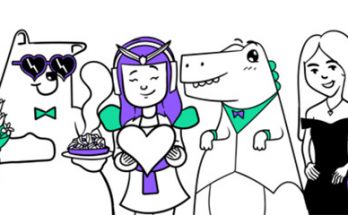Even ordering a web design from a real pro, you can not understand each other and get a bad result. Why is this happening?
Let's take a look at not the mistakes of the designer today, but those cases when the customer does something that badly affects the motivation of the performer.
Basically, there are three types of relationships between a customer and a designer: let's try to briefly review them.
#1. Client and Chef
You study the "menu" (portfolio), look at the prices, make a choice and order the chef the "dish" you like. In such a situation, you rely on the tastes of the designer, hoping that the work for you will do no worse than in the portfolio.
- Advantages: you don't participate in the work, you just pay and expect your "high kitchen".
- Disadvantages: The "chef" with you and your business may not be familiar. So, it does not take into account your specifics. Therefore, the result can be any, as in the game of roulette.
#2. Driving school instructor and student
It's the other way around in this situation. You are an instructor. It seems that you let the student drive, but you always tell him what to do and when to press. And sometimes you can intercept the steering wheel and dictate your own conditions.
- Advantages: The work is based on your preferences and you are always aware of the progress of the project.
- Disadvantages: you prevent the designer from doing business. You have your own tasks (business management or other), he - their own.
#3. Business partners
The ideal relationship that you have to strive for. You tell the designer about the goals of your project and create the terms of reference. The designer carries out sketches taking into account your wishes. You discuss them together and come to a successful result on mutually beneficial terms. Everyone does what they know best. This hotel deals website, which features an arguably great website design (spoiler warning: I made it!) is a perfect example of such a cooperation, at least in my humble opinion.
How can we achieve such good results? Here's a brief list of what I learned so far.
Competently prepare the terms of reference
Here's what we often hear from our "beloved" customers:
- "Well, to be beautiful, do it!"
Or...
- I want it to get caught,
Or...
- "Well, you draw, as you can see, and I'll tell you later."
Dear customer, this is for you: the designer, unfortunately, is not a telepath and cannot read your thoughts. Your participation in the work is a prerequisite for a good result. Before you start, explain: what is the purpose of your project, what do you want to achieve? Describe this in terms of reference, attach the examples you like.
Remember: anything that wasn't originally agreed upon is paid for later. If you are able to convey to the designer the essence of your business, you will not have to overpay later.
Talk about the purpose of the change, not the ways
Imagine, there's an operation in the surgical ward. And the patient on the operating table starts telling the doctor where to make the incision.
That's how your tips are assessed by the designer. If you need to change something, don't focus on what type of font you want to use, but what you want to get out of it.
If you want to suggest something, use the question form
Sometimes there is still a situation when the customer wants to change something specific in the design, and the second rule has to be broken. (This is especially true for the final stages.) How do we proceed?
There is a significant difference between a question and a categorical order.
Do you want the designer to think with you? Ask questions instead of trying to give random answers.
Conclusion
That's it: I hope that this post will help those who want to improve their customer-vs-designer communication level, or at least that made you smile!



